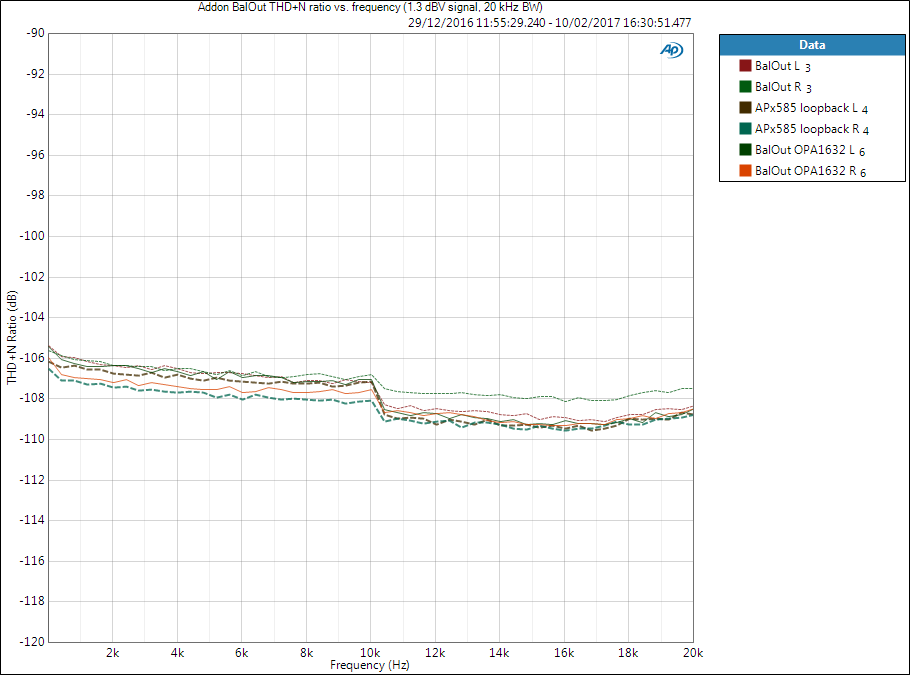Following performance figures have been measured in Addon BalOut module:
- Both opamps are so good that it is difficult to measure differences directly.
- LME49724:
- Noise level: -117 dBV (A-weighted),
- THD+N ratio: at least -109 dB (1 kHz, 2 Vrms), around measurement instrument limits.
- OPA1632:
- Noise level: -118 dBV (A-weighted),
- THD+N level: at least -109 dB (1 kHz, 2 Vrms), around measurement instrument limits.
Measurements
Originally the balanced addon board Addon BalOut for H-DAC have LME49724 fully differential operational amplifier. However, another fully differential opamp commonly used in high quality DIY audio is OPA1632 so I wanted to compare the two in measurement bench.
Below are THD+N vs. amplitude and THD+N vs. frequency plots. With OPA1632 both channels show equally low -116 dBV (non-weighted) noise while with LME49724 there is some variation in one channel. Addon BalOut has placeholder for THAT1606 balanced buffer but as can be seen from the graphs this is a serious performance bottleneck.
Again, at higher amplitude signal we are around the limits of Audio Precision APx585 measurement instrument and therefore probably not measuring actual opamp performance. Below we can see original BalOut with LME49724 (thin dashed line), BalOut with OPA1632 (thin solid line), and APx585 measurement instrument loopback (thick dashed line). All graphs are relatively similar but OPA1632 shows slightly lower traces.
Note that stated -109 dB THD+N ratio cannot be seen directly from these figures as I had incorrect signal levels when performing the sweeps. Those single figure values are checked separately.
OPA1632 measures slightly better in isolated tests but it does not give measurable difference on H-DAC as LME49724 is already good enough, the DAC chip probably being the weakest link. Moreover, OPA1632 costs significantly more; at the time of writing, prices (no VAT) for single quantities at Mouser are £2.66 for LME49724 and £4.20 for OPA1632.
To really distinguish the performance, some indirect distortion measurement should be done. In LME49724 datasheet distortion is measured by deliberately increasing the circuit distortion by a (theoretically) known factor. Anyway, it does not really matter here as the weakest link of the signal chain lies somewhere else.


